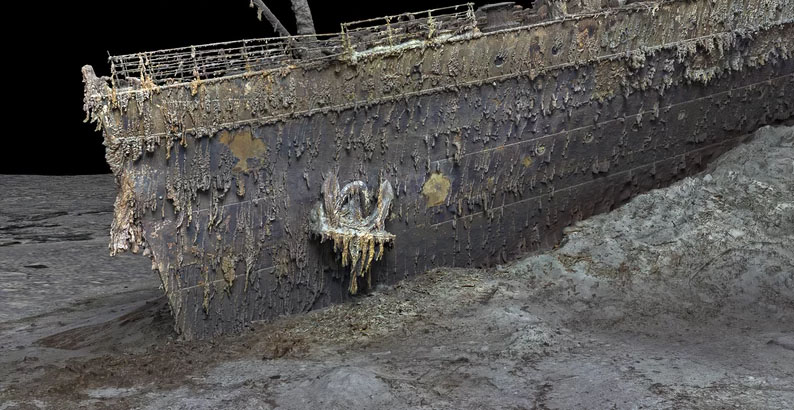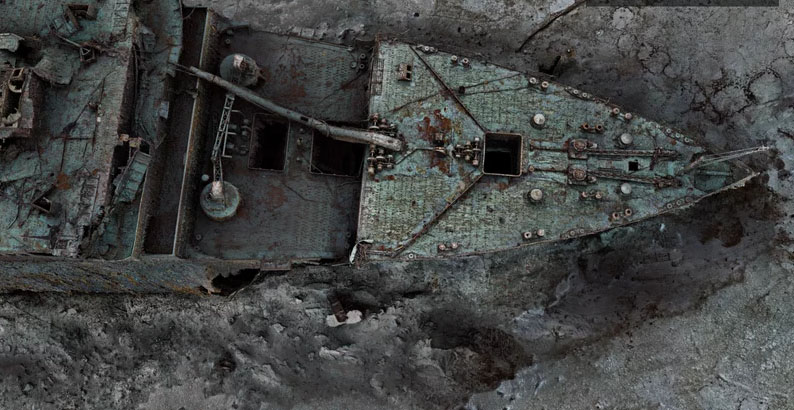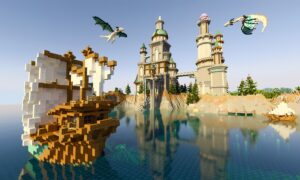A wonderful new perspective on the Titanic wreck is here, because of remote ocean mappers

Researchers had the option to plan the aggregate of the wreck site, from the Titanic’s isolated bow and harsh areas to its huge garbage field.
A remote ocean planning organization has made the very first regular computerized sweep of the Titanic, uncovering a totally new perspective on the world’s most popular wreck.
The 1912 sinking of the Titanic has enamored the public creative mind for more than hundred years. And keeping in mind that there have been various campaigns to the disaster area since its disclosure in 1985, its sheer size and remote position — exactly 12,500 feet submerged and 400 nautical miles off the bank of Newfoundland, Canada — have made it almost unthinkable so that anybody might see the full picture.
As of recently, that is. Utilizing innovation created by Magellan Ltd., researchers have figured out how to plan the Titanic completely, from its bow and harsh segments (what fell to pieces subsequent to sinking) to its 3-by-5-mile trash field.
The outcome is a careful “computerized twin” of the disaster area, media accomplice Atlantic Creations said in a news discharge.
“What we’ve made is an exceptionally exact photorealistic 3D model of the disaster area,” 3D catch expert Gerhard Seiffert says. “Beforehand film has just permitted you to see each little region of the disaster area in turn. This model will permit individuals to zoom out and to take a gander at the whole thing interestingly … This is the Titanic as nobody had at any point seen it.”
The Titanic site is difficult to get to, difficult to see and difficult to depict, says Jeremy Weirich, the overseer of the Public Maritime and Air Organization’s Sea Investigation program (he’s been to the site).
“Envision you’re at the lower part of the sea, there’s no light, you can’t see anything, the sum total of what you have is an electric lamp and that bar goes out by 10 feet, that is all there is to it,” he says. “It’s a desert. The fact that illuminated by your spotlight makes you’re moving along, you see nothing, and out of nowhere there a steel transport before you that is the size of a high rise and all you can see the light.”
This new symbolism conveys both that feeling of scale and level of detail, Weirich tells NPR.
Magellan calls this the biggest submerged filtering project ever: It created a phenomenal 16 terabytes of information and in excess of 715,000 still pictures and 4k video film.
“We accept that this information is roughly multiple times bigger than any submerged 3D model that is at any point been endeavored,” said Richard Parkinson, Magellan pioneer and President.
Specialists in Titanic history and remote ocean investigation are hailing the model as a priceless examination device. They accept it could assist researchers and history specialists with settling a portion of the boat’s waiting secrets — and dive more deeply into other submerged destinations, as well.
Long-lasting Titanic wayfarer and examiner Parks Stephenson depicted the model as a “unique advantage” in a telephone interview with NPR.
“It takes [us] further into new innovation that will be the norm, I think, for Titanic investigation, however all submerged investigation later on,” he adds.

The work yielded 16 terabytes of information and in excess of 715,000 still pictures, in what Magellan calls the biggest submerged checking project of all time.
After Robert Ballard — alongside France’s Jean-Louis Michel — found the site in 1985, he joined all of his photographs to shape the principal photomosaic of the disaster area, which showed the boat’s bow and was distributed in Public Geographic. Those endeavors have been repeated in the years since.
“However, the issue with all that is all there is to it requires understanding,” Stephenson says. “It requires human translation, and there are holes in the information.”
Streak forward to the late spring of 2022. Researchers endured a month and a half catching outputs of the site, utilizing innovation that Magellan says it had been creating throughout five years.
The undertaking conveyed two submarines, named Romeo and Juliet, a 2.3 miles beneath the surface to plan each millimeter of the disaster area site.
They didn’t go inside the boat, not to mention contact the site, as per existing guidelines, and offered their appreciation to the in excess of 1,500 casualties with a blossom laying service.
What’s more, they depict the mission as a test, with the group battling terrible climate and specialized difficulties in the Atlantic.
“At the point when we saw the information come in it was all worth the effort,” Seiffert says. “The degree of detail we saw and recorded was remarkable.”
The researchers went through months handling and delivering the information to make the “advanced twin,” which the organization says it’s anticipating sharing openly.
Stephenson saw an early form of the model, when Atlantic Creations welcomed him on to counsel on its legitimacy. So did Ken Marschall, the sea craftsman known for his Titanic works of art.
“We’ve both seen it with our eyes. We’ve both seen great many computerized pictures of the disaster area in symbolism, moving symbolism,” Stephenson said. “However, we’d never seen the disaster area like this. It was unique, and yet you just realized it was correct.”

Specialists say the model will be an important device for future Titanic examination and remote ocean investigation overall.
Stephenson says “toward the day’s end, absolutely no part of this matters.” However there’s an explanation individuals continue visiting and discussing the disaster area, he adds, and it’s not a direct result of any lost riches.
“It’s acclaim, I surmise,” Stephenson says. “Individuals can’t get enough of Titanic. Also, insofar as individuals can’t get enough of the Titanic, individuals will continue onward to … these secrets.”
For Stephenson’s situation, the unanswered inquiries continue to move him back.
“I’ve been crushing away at this for some time, and I’m not on a campaign to destroy the Titanic story that has developed starting around 1912,” he says. “Yet, … I have had sufficient experience and seen sufficient proof that makes me truly question even probably the most fundamental parts of the Titanic story.”
One model: Stephenson says there’s motivation to uncertainty the long-acknowledged end that the boat hit the ice sheet along its starboard side. He focuses to a developing group of proof that proposes it really grounded momentarily on piece of the ice sheet that was lowered submerged all things considered.
Simply taking a gander at the fundamental demonstrating has assisted Stephenson with bringing a ton of his proof and inquiries into center — it could be early days, yet he says he as of now has a superior comprehension of how the boat’s harsh came to be not doing so great.
Stephenson sees this second as a change in outlook in submerged paleontology.
“We’re basically getting to the furthest limit of the original of Titanic examination and investigation, and we’re preparing to change into the future,” he says. “Furthermore, I think this device fundamentally flags a shift from that age to the following.”
Stephenson needs to utilize the model to record the degree of Titanic investigation so far, from Ballard to James Cameron and then some. He says a “huge venture” is in progress, and will ideally bring about a logical paper and online chronicle. Then, at that point, he intends to utilize the instrument to respond to anything questions remain.

There have been “photomosaics” and different renderings of the wreck throughout the long term, however this is the principal such 3D model.
The Titanic is an entryway into profound sea investigation
As an oceanic excavator, Weirich is most keen on what the boat’s condition can show us about how to all the more likely save remote ocean wrecks overall. For instance, how has it affected the climate since it sunk, and how have the visits since its disclosure influenced the site?
The Titanic site has been assigned as a sea commemoration, which makes conservation significantly more significant. What’s more, Weirich expresses research on all that from its pace of crumbling to the microbial climate can be applied to other such destinations around the world.
There are assessed to be a huge number of wrecks on the planet, from old wooden boats in the Dark Ocean to The Second Great War vessels in the Bay of Mexico, Weirich says.
Furthermore, this sort of innovation could assume a urgent part in becoming familiar with remote ocean conditions as a general rule, from undersea assets to land elements to obscure species.
Weirich says he trusts these pictures of the Titanic will give individuals a more noteworthy appreciation for the profound sea, and a superior comprehension of exactly how much is left to investigate.
“The tale of Titanic and the actual wreck is very convincing, yet it is an entryway for individuals to comprehend what we know and have hardly any familiarity with the profound sea,” he adds.
Weirich was by and by charmed by those first pictures of the wreck in Public Geographic when he was only 10 years of age. That started his long lasting interest in sea investigation — and he trusts youngsters seeing these most recent pictures are roused as well.








































